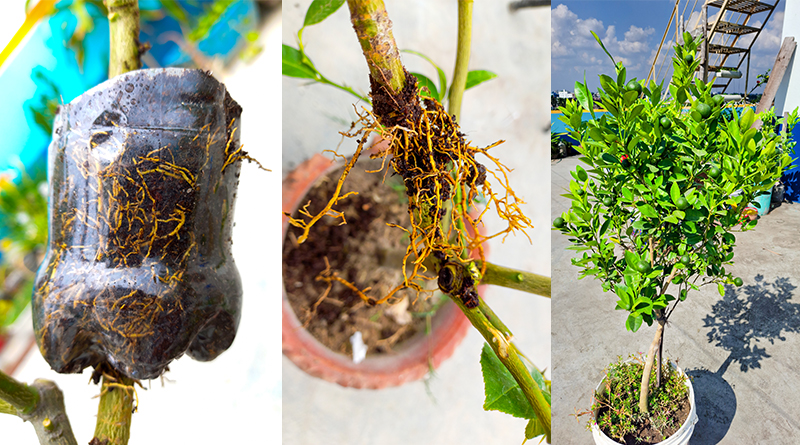How to Graft a lemon tree?
T-budding is a popular and effective method for grafting lemon trees. It involves inserting a bud (scion) from a desired lemon variety into a T-shaped cut made on the bark of a rootstock.
Here’s a step-by-step guide:
- Prepare the Rootstock:
- Choose a healthy, young lemon seedling as the rootstock.
- Make a T-shaped cut on the rootstock’s bark, ensuring the bark is lifted slightly.
- Prepare the Scion:
- Select a mature bud from the desired lemon variety.
- Cut a shield-shaped piece of bark containing the bud.
- Insert the Scion:
- Insert the shield-shaped scion into the T-shaped cut on the rootstock, ensuring the cambium layers of the scion and rootstock are in contact.
- Wrap the Graft:
- Wrap the graft tightly with grafting tape to secure the scion in place.
- Protect the Graft:
- Cover the grafted area with grafting wax or plastic wrap to protect it from moisture loss and disease.
Additional Tips:
- Timing: The best time for T-budding is during the dormant season, typically in late winter or early spring.
- Hygiene: Sterilize your tools before and after grafting to prevent the spread of diseases.
- Patience: It may take several weeks for the bud to start growing.
- Aftercare: Once the bud has taken, remove the grafting tape and continue to care for the grafted tree as you would a normal lemon tree.
By following these steps and paying close attention to detail, you can successfully graft your lemon tree and enjoy the fruits of your labor.
48 total views, 1 views today




